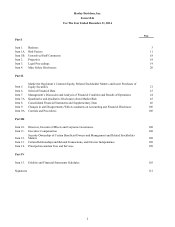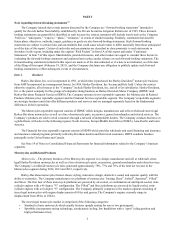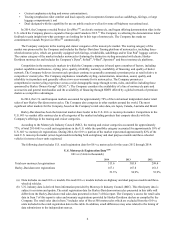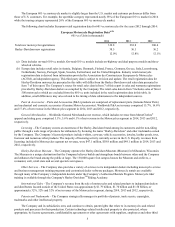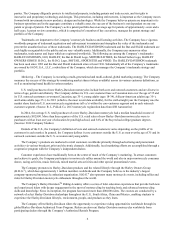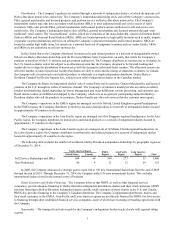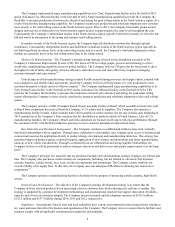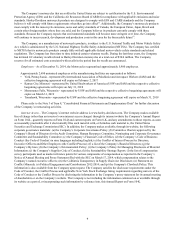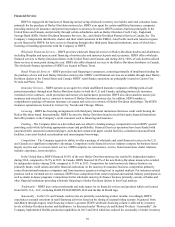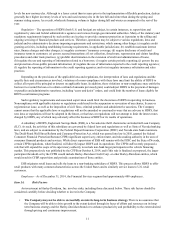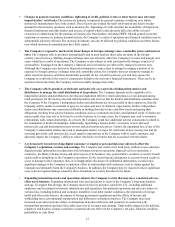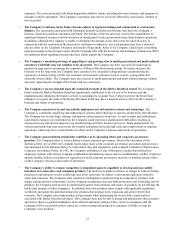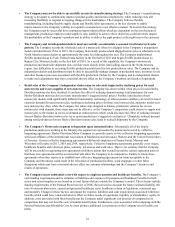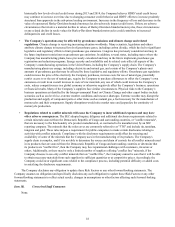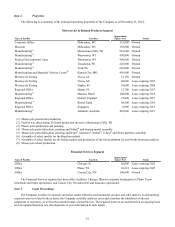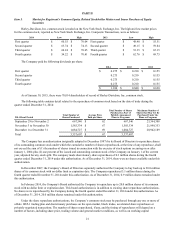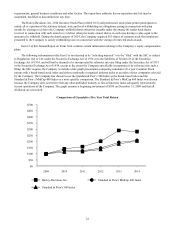Harley Davidson 2014 Annual Report Download - page 12
Download and view the complete annual report
Please find page 12 of the 2014 Harley Davidson annual report below. You can navigate through the pages in the report by either clicking on the pages listed below, or by using the keyword search tool below to find specific information within the annual report.
• Changes in general economic conditions, tightening of credit, political events or other factors may adversely
impact dealers’ retail sales. The motorcycle industry is impacted by general economic conditions over which
motorcycle manufacturers have little control. These factors can weaken the retail environment and lead to weaker
demand for discretionary purchases such as motorcycles. Tightening of credit can limit the availability of funds from
financial institutions and other lenders and sources of capital which could adversely affect the ability of retail
consumers to obtain loans for the purchase of motorcycles from lenders, including HDFS. Should general economic
conditions or motorcycle industry demand decline, the Company’s results of operations and financial condition may be
substantially adversely affected. The motorcycle industry can also be affected by political conditions and other factors
over which motorcycle manufacturers have little control.
•The Company is exposed to market risk from changes in foreign exchange rates, commodity prices and interest
rates. The Company sells its products internationally and in most markets those sales are made in the foreign
country’s local currency. Shifting foreign exchange rates can adversely affect the Company's revenue and margin, and
cause volatility in results of operations. The Company is also subject to risks associated with changes in prices of
commodities. Earnings from the Company’s financial services business are affected by changes in interest rates.
Although the Company uses derivative financial instruments to some extent to attempt to manage a portion of its
exposure to foreign currency exchange rates and commodity prices, the Company does not attempt to manage its
entire expected exposure, and these instruments generally do not extend beyond one year and may expose the
Company to credit risk in the event of counterparty default to the derivative financial instruments. There can be no
assurance that in the future the Company will successfully manage these risks.
• The Company sells its products at wholesale and must rely on a network of independent dealers and
distributors to manage the retail distribution of its products. The Company depends on the capability of its
independent dealers and distributors to develop and implement effective retail sales plans to create demand among
retail purchasers for the motorcycles and related products and services that the dealers and distributors purchase from
the Company. If the Company’s independent dealers and distributors are not successful in these endeavors, then the
Company will be unable to maintain or grow its revenues and meet its financial expectations. Further, independent
dealers and distributors may experience difficulty in funding their day-to-day cash flow needs and paying their
obligations resulting from adverse business conditions such as weakened retail sales and tightened credit. If dealers are
unsuccessful, they may exit or be forced to exit the business or, in some cases, the Company may seek to terminate
relationships with certain dealerships. As a result, the Company could face additional adverse consequences related to
the termination of dealer relationships. Additionally, liquidating a former dealer’s inventory of new and used
motorcycles can add downward pressure on new and used motorcycle prices. Further, the unplanned loss of any of the
Company’s independent dealers may lead to inadequate market coverage for retail sales of new motorcycles and for
servicing previously sold motorcycles, create negative impressions of the Company with its retail customers, and
adversely impact the Company’s ability to collect wholesale receivables that are associated with that dealer.
•A cybersecurity breach involving digital consumer or employee personal data may adversely affect the
Company’s reputation, revenue and earnings. The Company and certain of its third-party vendors receive and store
digital personal information in connection with its human resources operations, financial services operations, e-
commerce, the Harley Owners Group and other aspects of its business. Any system failure, accident or security breach
could result in disruptions to the Company's operations. To the extent that any disruptions or security breach results in
a loss or damage to the Company's data, or in inappropriate disclosure of confidential information, it could cause
significant damage to the Company's reputation, affect its relationships with customers, lead to claims against the
Company and ultimately harm the Company's business. In addition, the Company may be required to incur significant
costs to protect against damage caused by these disruptions or security breaches in the future.
•Expanding international sales and operations subjects the Company to risks that may have a material adverse
effect on its business. Expanding international sales and operations is a part of the Company’s long-term business
strategy. To support that strategy, the Company must increase its presence outside the U.S., including additional
employees and investment in business infrastructure and operations. International operations and sales are subject to
various risks, including political and economic instability, local labor market conditions, the imposition of foreign
tariffs and other trade barriers, the impact of foreign government regulations and the effects of income and
withholding taxes, governmental expropriation and differences in business practices. The Company may incur
increased costs and experience delays or disruptions in product deliveries and payments in connection with
international operations and sales that could cause loss of revenues and earnings. Unfavorable changes in the political,
regulatory and business climate could have a material adverse effect on the Company’s net sales, financial condition,
profitability or cash flows.
12


